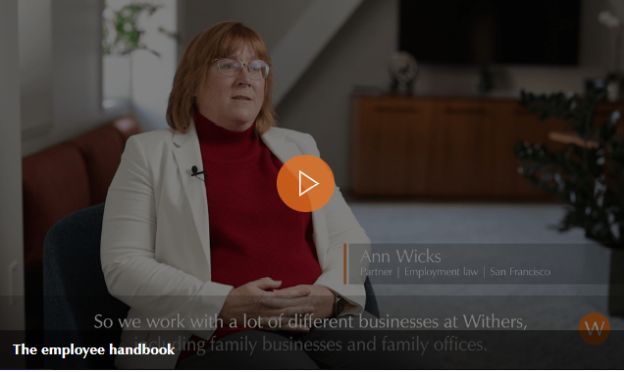We work with many different types of businesses at Withers, including startups, family businesses, and family offices, in addition to large corporations, and assist them with developing and implementing policies and procedures. In California, when a business has five or more employees, we usually recommend a business create an employee handbook as a guidebook for what employees can expect and as a resource for supervisors.
For example, if you have an employee who has a medical issue and needs to take a leave of absence, the first place the employee is going to go is to the employee handbook to see what amount of leave is available. And often the first place a manager goes to figure out what they have to do is to the handbook to see what the employee has available.
From how to clock in, how to record your time and when to take a meal or rest break to an employee's benefits like 401k medical benefits, vision benefits, time off holiday pay and the right to be absent from work for things like jury duty or a medical leave or pregnancy leave, the employee handbook acts as an essential and efficient resource.
The laws are complicated, and if you have the right policy in your handbook, it can help you navigate issues that develop fairly easily. Learn more about developing an employee handbook in this video featuring employment law partner Ann Wicks.
The content of this article is intended to provide a general guide to the subject matter. Specialist advice should be sought about your specific circumstances.


